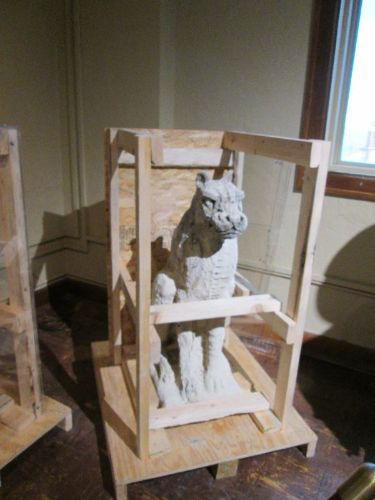Dyche Hall Grotesques, 1345 Jayhawk Boulevard
/Dyche Hall is among the most historic and architecturally significant buildings on the KU campus. It was built between 1901 and 1903 to serve as KU's Natural History Museum, primarily to house the Panorama of North American Mammals, which had been created by Lewis Lindsey Dyche as one of the state’s exhibitions in the Kansas Pavilion at the 1893 World's Columbian Exposition in Chicago. The Panorama took the world by storm, attracting 2.4 million visitors during the six months of the fair.
Kansas City architects Walter C. Root and George W. Siemens, in a 1902 Lawrence Daily Journal-World article, declared that for the hall’s exterior facade they intended to "carve beautifully all manner of birds, beasts and reptiles … We wish to build a building which will be unique in itself, yet not inharmonious with the other buildings, and which will be a beautiful crown to this unusual site, and a source of pride to the citizens of the state always." This included sculpting and mounting grotesques along the roofline.
The Dyche Hall grotesques were carved by master mason and sculptor Joseph Roblado Frazee and his son Vitruvius. After 113 years, as part of a major renovation of the exterior and interior of the seventh floor of Dyche Hall, the eight grotesques were taken down to save them from further destructive erosion by the elements. Karl Ramberg & Associates, working with KU School of Architecture Prof. Keith Van de Riet, was selected to carve replacements of the eight grotesques that are to be as faithful as possible to the originals. Ramberg currently is roughing out the basic shapes by mallet and chisel in a workspace in front of the museum. In addition, related educational and public outreach activities are ongoing.

